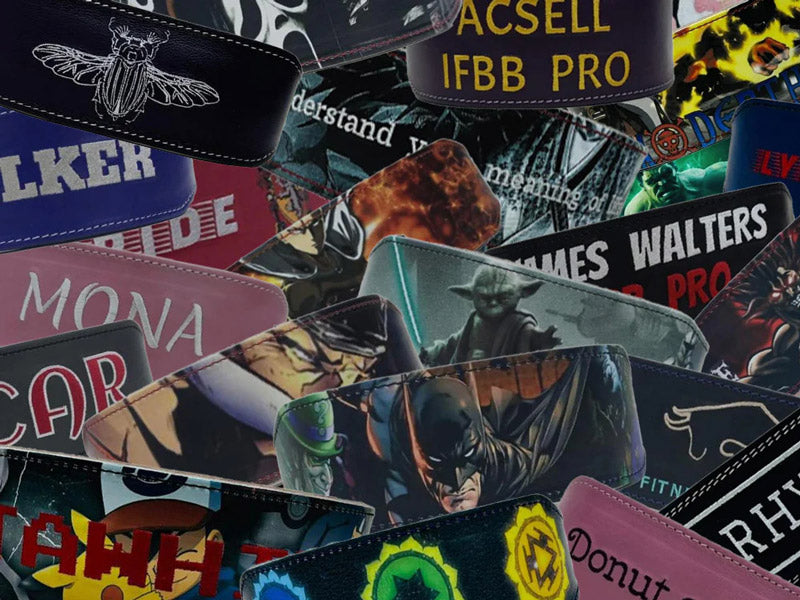
Lifting Straps vs Chalk: What’s Best For You?
In just about every exercise you’ll do in the gym, you’ll find one thing in common: you’re probably going to be using your grip. Other than performing specific exercises to improve your grip strength, there are a few other options to increase your hold on the iron.
The two most common options are using either chalk or lifting straps. In this article, we’re going to go over the pro’s and con’s of each, but with a twist. Instead of discussing the benefits of traditional lifting straps, we’ll be going into detail on the uses of our Power Grips.
Power Grips are a new innovation from Gunsmith Fitness, which replace gloves, lifting straps, wrist supports and hooks. For this reason, we’ll be comparing chalk to Power Grips, instead of your traditional lifting straps.
Understanding the Differences between Lifting Straps and Chalk
It’s important to note that both Power Grips and chalk have their own pro’s and con’s, and that each have their place within certain workouts.
As with most things, the best option will be what works out in your specific circumstance, and can even change day-to-day.
A Brief Overview of Chalk and Power Grips
Chalk has been used for ages to improve grip, and is used in a number of different sports, from power lifting to rock climbing.
Chalks primary benefit is in absorbing moisture from the palms, which translates into a better grip. By removing moisture from the hands, chalk also helps to prevent the forming of blisters, and reduces the chance of ripping the skin.
Lifting Straps and Power Grips are a more recent invention, and primarily work by wrapping around both your wrist and the bar. This almost ‘bypasses’ using your grip, as the bar is connected to your wrists via the straps.
You do need to grip the bar in order to keep the straps on tight, but the amount of force is reduced considerably.
Pro’s and Con’s
Now that we’ve gone over a brief introduction of each, let’s get into the pro’s and con’s of using Chalk or Power Grips.

Chalk Pro’s:
- Increase Grip- As mentioned above, chalk primarily works by absorbing the moisture from your hands. Dry hands grip better, especially when combined with the knurling of the bar.
- Helps to Build Grip Strength- Another benefit of chalk is that since you aren’t using any other aids, you’re increasing your grip strength. Obviously in weight lifting, getting stronger is the name of the game, so using chalk will definitely help.

Chalk Con’s
- Your Grip Will Fatigue- Chalk will not prevent your grip strength from giving out during your workout. Much of the time, this isn’t a problem, but during an incredibly intense workout you may find that your grip starts to fade, especially if you’re doing a bunch of pulling exercises.
- Chalk is Messy- This is one that’s hard to get around: Chalk is just plain MESSY! In fact, chalk is so notoriously messy that a lot of gyms simply won’t allow it! Using chalk also means you run the risk of getting chalk over everything in your gym bag. While this problem is fixed pretty easily by running everything through the washing machine, it’s still an annoyance of being the guy in the gym with everything covered in chalk.

Power Grips Pro’s
- More Volume- Power Grips work similarly to lifting straps by wrapping around your wrists and then hooking over the bar. Because of this, you’re saving your grip strength and able to do much more volume.
- Focusing on Other Muscle Groups- By using Power Grips, you no longer have to focus on gripping the weight as tight, which means you can focus on the main muscle group that you’re trying to improve.
- Protects Your Hands- Power Grips also take the place of gloves by putting themselves between your hands and the bar. Say goodbye to blisters!
Power Grips Con’s
- Will Not Improve Grip Strength- There are a lot of advantages to using Power Grips or Lifting Straps, but it’s important to note that regular use will be detrimental to your grip development. The old saying ‘Use it or Lose it’ holds especially true for muscles, and if you don’t use your grip regularly, your muscles may start to decline. This doesn’t mean you shouldn’t use straps or Power Grips, but just that you should also focus on building your grip strength.
- Not Approved for Competition- While this won’t affect most of us, Power Grips and lifting straps are usually not approved if you’re in a serious competition, since they give an unfair advantage to the user.
Chalk vs Power Grips/Straps: The Final Verdict
After going into detail, we’ve all probably come to the same conclusion: both chalk and Power Grips/Lifting Straps have their specific time and place to be used, and deserve a spot in your everyday gym bag.
Unless you’re concerned about the mess or your gym forbids it, you should be using chalk pretty regularly. It’s cheap and easy to use, and as long as you keep it sealed you shouldn’t have to worry about it getting everywhere.
Chalk can also be used in conjunction with straps or Power Grips, so there’s really no point in not having some on hand.
Power Grips or Straps should be used a bit more sparingly, and only during ‘pull’ exercises (you shouldn’t be using straps for the bench press).





